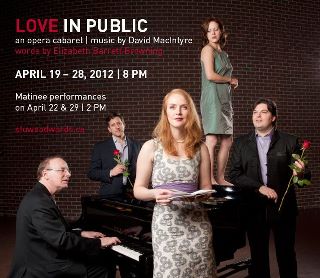Let’s face it, sometimes memorizing can be the hardest part of learning a piece of music. In performance it seems that the only thing I ever find my stomach churning over is whether or not my memory will hold out. I don’t worry about that scary high note, or who’s in the audience or whether I’ll have enough air to get through that long, long phrase or, or, or… Truly, the only thing that ever scares me anymore is remembering the text and coming in at the right time! Here are a few ideas that have helped me with memorizing some pretty difficult music.
1. Eat breakfast. Seriously. You need your brain to be working at full-force. Breakfast helps. So does coffee.
2. Start with the text. I’ve said it before and I’ll say it again: having a really strong understanding of the text is crucial to memorizing. If it’s in a language that is not your own, translate word for word. If it seems jumbled, then make sure you also write a translation that puts the words into an order that you understand.
2. Find the connections between text and music. See if you can figure out why the composer wrote rests, long phrases, high notes, tempo changes, tenuto markings (etc etc etc) where they did. There is often a very logical reason behind everything. It doesn’t really matter if your reasoning is the same as the composer’s, it just has to work for you. Create bridges between ideas, so that the song from beginning to end has one long linear thought.
3. See the story! If you were a film director, how would you direct your song? If there are characters in your song, which actors would you hire? Where would you do the filming? How would you light the scene? In your imagination, there is no such thing as budget! The more vivid your imagination is, the easier it will be for you to commit your song to memory.
3. Practice your photographic memory. When things are particularly tricky (for me, it’s always a challenge to remember entrances, especially when time signatures change) it is sometimes helpful to take a mental picture of the troublesome measures. I only like to do this when I am feeling particularly anxious about remembering something. Usually it works best to simply listen and to know what my aural clues are for entrances. But when that doesn’t work, simply memorizing the way the music looks on the page is helpful. Be careful with this because it can create a wall between you and the audience so use it sparingly.
4. Most importantly, LISTEN. Make sure you know exactly what to listen for in the piano. There may be a particular rhythm, or maybe a chord in the left hand that can be your clue.
5. Write out the text. Write the original language and the translation. Write it out as many times as it takes so that you don’t have to stop to think about what the next phrase is.
6. Find mnemonic devices to help you remember which word is coming next. If the first line starts with an “M” and the second line starts with a “P” and you find yourself mixing them up, just make a note that in the alphabet, “M” comes before “P”. It sounds silly, but it works!
7. Repeat, repeat, repeat. Go for brisk walks, singing the song in your head over and over until you can do the whole thing 5 times without mistakes. Do this in the car, on the bus, while doing dishes, or if you’re like me, while rocking the baby to sleep!
These are just a few suggestions to help you memorize. Of course, this isn’t just for contemporary song, it’s for everything. These steps work for me and I’m well aware that they may not work for you. The best thing to do is to learn your personal pattern that works for your memory. My best piece of advice is to memorize frequently. The brain is like a muscle that needs constant stretching and toning in order to be in shape. The more you do it, the easier it gets!
 A few months ago, I was hired to do my first performance of Schönberg’s Pierrot Lunaire. I was thrilled; not only because it’s for the 100th anniversary of the premiere of the piece, but also because a few months earlier I had been making goals for myself and decided that before my death, a performance of Pierrot was mandatory. (For anyone who cares or who hires, my other pre-death musical achievements will be: Strauss’ Four Last Songs, Berg’s Sieben Frühe Lieder – both with orchestra – Ellen Orford, and maybe just one Juliette before I’m too old and wizened to be remotely believable.)
A few months ago, I was hired to do my first performance of Schönberg’s Pierrot Lunaire. I was thrilled; not only because it’s for the 100th anniversary of the premiere of the piece, but also because a few months earlier I had been making goals for myself and decided that before my death, a performance of Pierrot was mandatory. (For anyone who cares or who hires, my other pre-death musical achievements will be: Strauss’ Four Last Songs, Berg’s Sieben Frühe Lieder – both with orchestra – Ellen Orford, and maybe just one Juliette before I’m too old and wizened to be remotely believable.)





